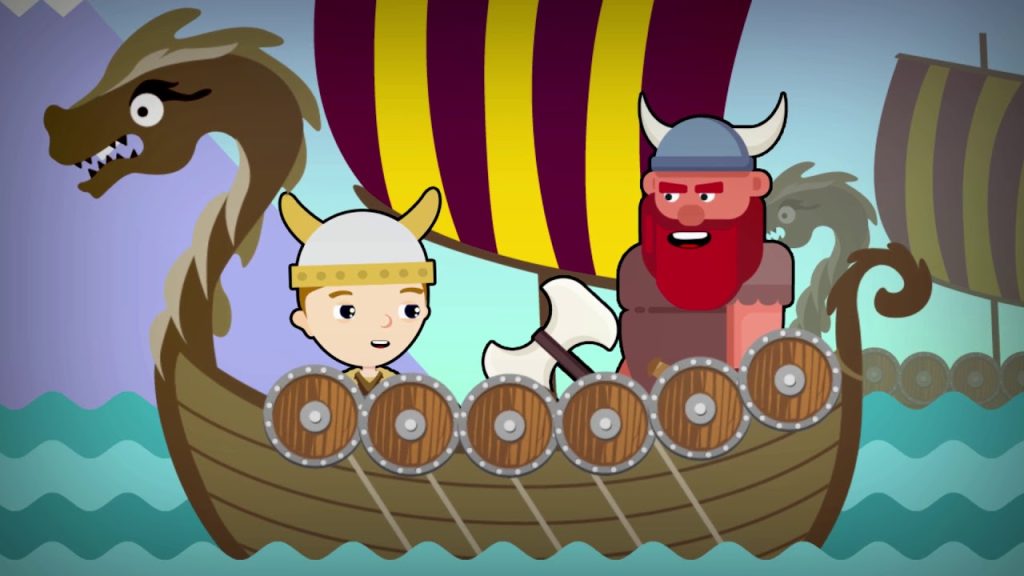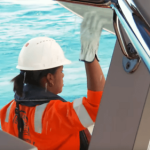
The Vikings were seamen from the Northernmost part of Europe. From being merchants to feared warriors, the Vikings were versatile which has led to their name being spoken out in reverence and awe in even today’s time. For three centuries – between the eighth and the 11th – they wielded their power in the entire Northern Europe giving way to the rise of a force unique and unparallel in the pages of history.
Since the geographic location native to the Vikings was conducive to oceanic transport, the Vikings came up with ingenious methods of ship craft. Viking boats and ships were singular and provided them with the much needed thrust to win battles and conquer the world commercially.
Detailed below is a list of 10 such Viking ship facts which will help one to understand the dynamics of the Viking ships and perceive them with a much better clarity:
I. Used Not as War Ships but as Continuous platforms
The ships that were used by the Vikings to wage wars were long and robust. By themselves, theViking Long Ships were never utilised by the Vikings to serve as a war vessel, but rather such numerous long ships were tied to make a continuous platform on shallow water areas, enabling the naval warriors to stave off attacks and defend themselves respectably – without offering any advantage to either party.
II. Ships as Reward
Viking ships were highly regarded for the resourcefulness and utility. The long ships that were conquered were souvenirs for the victors as a demonstration of their superior naval strength.
III.Unique Design, Easy Manoeuvrability
The Viking Long Ships were categorised for their flatness, lightness, and speed (around 15 knots). Their length did not hinder the ships’ movement in the waters and the ships could be used to move in the shallower waters as well. The unique design of the ships made changing directions easy and abruptly in the water.
IV. Viking Ships also used as Funeral Ships
Superstitions played a major role in the Scandinavian culture. One important superstitious attribute was that of the Viking funeral ritual. A unique mummification, the Viking funeral ceremony involved a dead person being elaborately dressed in finery and placed in a Viking vessel. The Scandinavians believed that the Viking ships could carry the dead to the deserved hereafter, making the funeral rites so detailed.
V. Extensively used as Cargo Ships
Apart from long ships, the Vikings also used commercial vessels for cargo hauling and transportation.
– The Knarr was a boat that was used for major long distance voyages in the Atlantic Ocean with a cargo capacitance of 50 tons.
– The Karves were used for ferrying passengers and could be used in the shallower water parts. Apart from ferrying of passengers, the Karves were also used to carry small cargo and farm animals.
– The most commonly used boat was the Faering, incorporating a simple oaring mechanism.
VI. Unique Design
Designing aspects of Viking vessels were note worthy. The vessels were built of wood overlapped and supported with the help of iron impales. The edges of the boat were curved in the form of dragon warheads, creating an aura of veneration across.
VII.Dual Maneouvering Capability
Viking boats and ships could be dually manoeuvred. When required the sails would be used and when the need arose, the oarsmen could manoeuvre the ship appropriately. The presence of the oars made the ship movement incredibly easy in the shallow water parts.
VIII. Vikings Invented Ship Keel
The world owes the innovation of the concept of keel to the Vikings. In order to reduce the sustained dependence on wind power, the Vikings came up with the designing of the keel, which could offer stability to the vessel for extended periods – laterally.
IX. No Sitting or Storing Space
An oaring ship has pre-designated places for the oarsmen to power the oars. The Viking vessels contrarily did not have any specific seating area for the oarsmen. This flexibility allowed the Vikings to conserve space in the vessel without having to compromise on the manoeuvrability aspect.
X. Robust Ships and Unique Navigation Tricks
In terms of navigation, the Viking sailors used whale sightings to decipher and determine the course of their journey. In addition to whales, the then prescribed methods using the sun as a focal navigating point was also used by the Viking navigators. Moreover, Viking ships were supposed to be known as the most robust and beautiful ships of the ancient marine world.
The Vikings provided a completely different perspective of water navigation from the then existing standards. Their way of thinking and their ability to design vessels to enhance their marine transportation capacitance, makes the Vikings’ architectural abilities worth appreciating and admiring.


